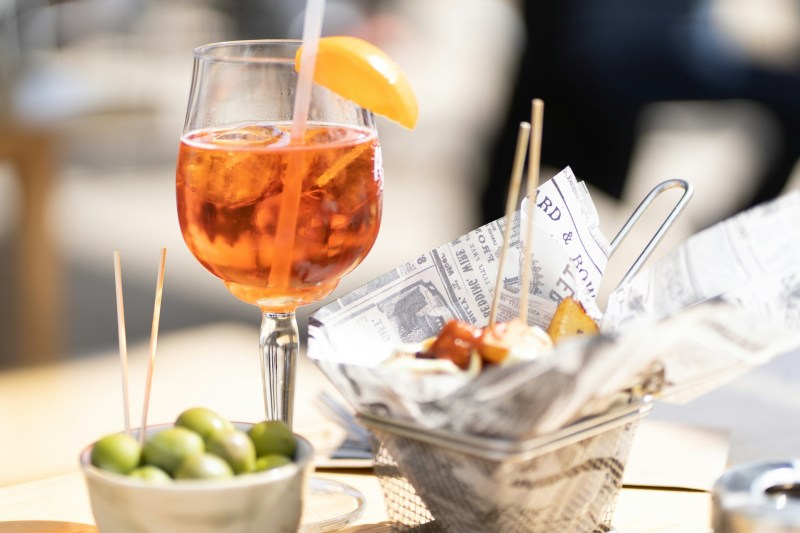
Ahh, summer. It’s time for picnics in the park, days visiting the beach, and, of course, the Aperol Spritz. The bright orange hues of this drink are everywhere at this time of year — it’s even the most popular cocktail in several states — and it’s a fixture of late lunches and afternoons in the sun.
With its bitter and sweet flavors from both Aperol and prosecco, it’s got enough complexity to appeal to drinks enthusiasts but it’s approachable enough for casual drinkers to enjoy as well. It’s practically universally beloved. But I’m here to tell you there’s a better way: There’s a simple change you can make to this drink to make it even tastier.
I don’t feel the need to mess with the ratios of an Aperol Spritz myself. I like the 3:2:1 rule of prosecco to Aperol to sparkling water. But where I take issue with the conventional wisdom of this drink is in the garnish. Nine times out of ten, you’ll find this drink garnished with an orange slice. And that’s fine! It’s not offensive, it matches with the color, and it adds a tiny bit of bite from the rind.
But there’s a far superior garnish for your spritz, and it’s an olive. Not the little pimento stuffed olives you get in a martini, or the black olives you throw into your pasta dishes, but a big, juicy, meaty sort of green olive like a Cerignola. You want something that’s chunky and crisp, and you’re better off looking in the fridge snacks section of your supermarket than in the jars. You don’t want anything with too much oil or which is stuffed, just a nice, high quality olive with firm flesh and a buttery taste.
“But doesn’t that make your spritz kind of salty and savory?” I hear you cry. Yes, yes it does. And that’s why it’s so great. Aperol is so big on sweet and bitter flavors that it needs something robust to balance it out, and an olive garnish works perfectly. Throwing an olive (or two!) into your Spritz (impaled on a wooden skewer for easy nibbling) adds a much-needed hit of salt.
I first saw this garnish when drinking spritzes in Venice, where, unlike in the rest of Italy, the olive garnish seems to be the norm. And I tell you, the Venetians are on to something. Try it out and be converted.



